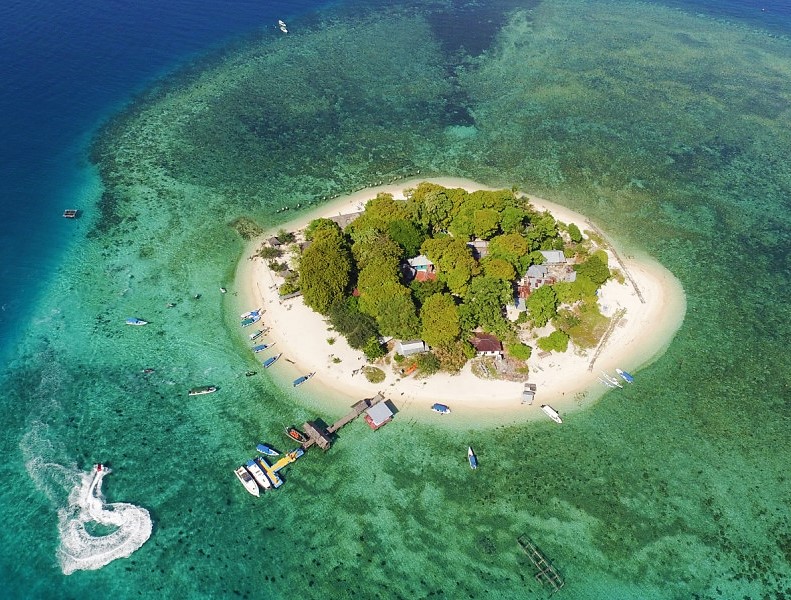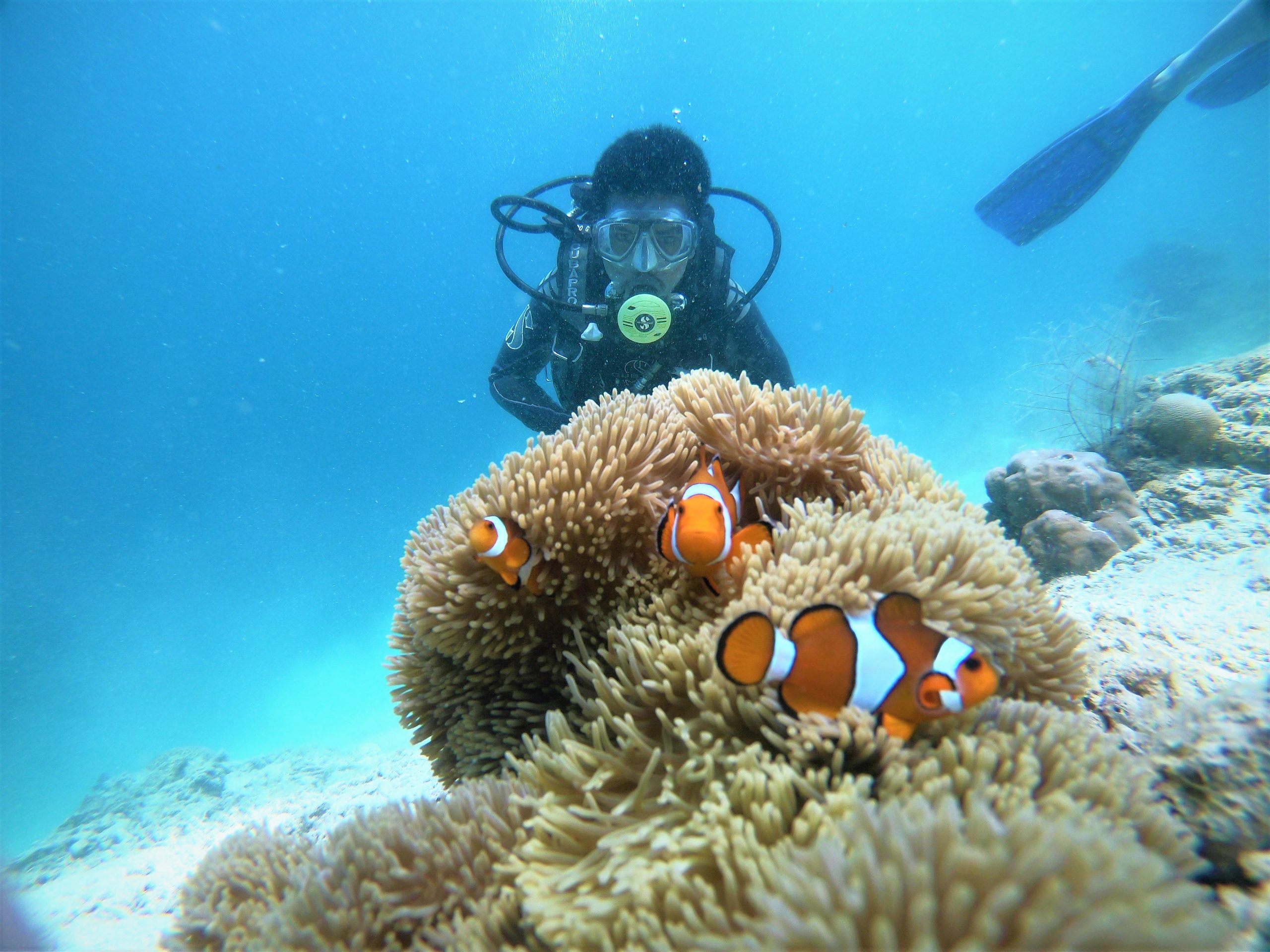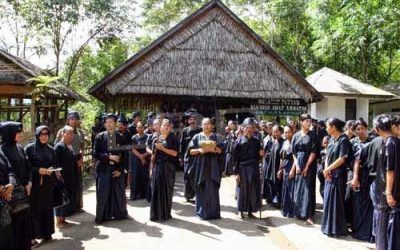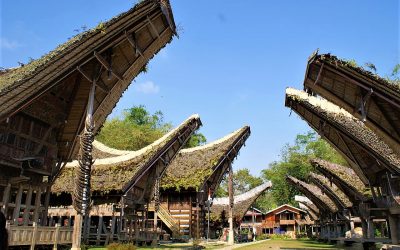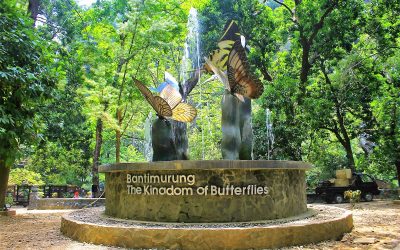Home / Batik Regions – Central Indonesia – Sulawesi Island – South Sulawesi / Samalona Beach
Natural Destination
Experience the tropical nature!
Samalona Beach
Water activities at Samalona (Photo: @Jalansanasini)
Coral Reefs at Samalona beach (Photo: @M. Saadduddin Tenripada/Travelingyuk)
Samalona Beach
If you are longing for a small getaway on an island with blue sea and white sand, Samalona island is the perfect destination. Located 13.6 km near Losari Beach, this island could be reached by motor boat for 30 minutes from Makassar city, South Sulawesi. With extraordinary view of untouched white sand and beautiful coral reefs, this island offers a great location for sunbathing, snorkelling, and other water sports. If you come here, it is suggested to bring your own lunch and food. For supporting the conservation of the island, don’t forget to bring back the food wastes to keep the cleanliness of the island. Be ready to be pampered by the tropical nature!
Natural Tourism Destination
Samalona Beach
Tourist Attractions in South Sulawesi
Ammatoa Indigenous Village
Kajang tribe of Ammatoa Village is known for their typical traditional ceremony that is practiced to reveal
Tana Toraja National Heritage Site
One cannot miss the wonder of Kete Kesu Village in Tana Toraja. It is the homeland of
Bantimurung National Park
Have you ever thought if the Kingdom of Butterflies really exists in the world?
South Sulawesi
Batik Motifs
Tongkonan
Toraja’s traditional house is called Tongkonan. Tongkonan is a place for
Paqbarre Allo
The word “Barre” means round and “Allo” means the sunlight. This motif is interpreted as
La Galigo
La Galigo is a literary work of the Buginese Epic that has 300 thousand epic lines. It is considered even
Lontara
The Lontara script itself is a typical ancient script of Bugis and Makassar communities. History records that
Discover
Indonesian
Batik
Motifs
Jumputan Bintang
The word Jumputan means the tie-dye technique, while the word “Bintang” refers to
Wirasat
Wirasat or divine inspiration is a gift from God. This inspiration is symbolized by
Sekar Jati
Sekar means flower and Jati refers to teak trees that symbolizes a strong mental character that
Bultiya
The word ‘Bultiya’ is an acronym of the three major tribes in North Kalimantan, namely
Pati-Pati Pinehiku
It symbolizes the hierarchy in society and the social status of the Mekongga
Taiganja
Taiganja is a precious gold pendant that shows the social status of the Kaili family. It is
Kerawang Tegak Aceh
The Vertical Upright (Kerawang Tegak) Motif symbolizes a person who has a strong
Wakatobi
It symbolizes the coastal beauty of the Wakatobi island and the symbol of Patra symbolizes
Gajah Way Kambas
The motif illustrates the Lampung’s natural reserve, the Way Kambas. it also symbolizes
Ukir Sentani
The Ukir motif is a batik motif that is inspired by various traditional Sentani wood carvings
Kaganga Tanah Rejang
If Batik Besurek combines Arabic calligraphy motifs, then the Kaganga batik takes
Gigi Haruan Lidi
The Gigi Haruan Lidi motif is taken from the name of the cork fish and is a symbol of
Bintik Tujuh
The Bintik Tujuh (Seven Dots) motif has 7 white spots and green color gradation as
Dayak Taghol
Dayak Taghol has a distinctive style of four curved lines and small dots. This motif represents
Tampuk Manggis Sasirangan
The motif illustrates the philosophy of the mangosteen fruit, which is
Leuit Sijimat
This motif reflects the daily activities of the Baduy tribe in Banten. The main ornaments of batik motif consist of:
Gamolan
This motif illustrates Gamolan, a bamboo musical instrument of Lampung that is
Gurdo Solo
Gurdo or garuda bird is the mount of the Indian god Vishnu. As the Sun Bird,
Awan Berarak
Awan Berarak is a combination of Dayak motifs and Malay patterns. The word ‘Awan Berarak’ means the
Kaharingan
The Kaharingan or ‘tree of life’ based on the Dayak tribes’ belief system. This tree symbolizes
Merak Ngeram
The hatching peacock motif has a very deep meaning which refers to the sacrifice and
Keluak Daun Pakis
The word “Keluak” is a Minang language which means twisted or tangled. The Motif of
Sido Mulyo
Sidomulyo is one of the classical motifs, which is specifically used for the bride’s costume in
Rumah Mamuju
the Batik motif illustrates the house of Mamuju King with the stairs, located on the left of the wooden stage house
Tenun Bima
The motifs are adopted from Bima woven textile. This pattern has received a great
Gedhog Kembang Waluh
a combination of Javanese cultural motif of the Majapahit kingdom (XII-XIV century) with
Tifa Totobuang
The batik motifs illustrate Maluku’s traditional music instrument called
Kuda Kupang
Horses symbolize wealth. It contains noble values of virtuous characters that bring
Ikan tambal
The word “Ikan” refers to fish. The philosophical meaning of Ikan Tambal means is
Pala Salawaku
This motif illustrates the unique weapons of the Maluku region, namely
Enggang Dayak
Local people beliefs that hornbills are an incarnation of the Commander of the Birds. It has supernatural
Manguni Minahasa
Manguni is identified as the symbol of the Minahasa people. Manguni is known as a
Angsa Duo
According to legend, the Angso duo batik motif is a pair of swans that are believed to have led Princess
Daun Simpor
This motif is inspired by the Simpor plant (Dillenia Suffruticosa) which is a typical
Lok Baintan Floating Market
As you can imagine, the most authentic thing is that you can buy things and even
Parang Seling
Parang Seling or “alternating daggers” is a royal batik motif. It is a feminine variant of
Bomba Mawar
This motif means sacred love for family, kingdom, and God; It also illustrates
Gorga Simeol-Meol
The Gorga Simeol-meol is a pattern of plant tendrils. it is regarded as a symbol of longevity and
Malinau Cultural Festival
You will witness a unique competition that might not be found other than in
Dayak Kamang
Kamang motif is generally found in the Dayak tribe shield because it is believed to
Bale Lumbu
This motif signifies the welfare of the ancient Sasak society. Bale also symbolizes the
La Galigo
La Galigo is a literary work of the Buginese Epic that has 300 thousand epic lines. It is considered even
Hiu Taliyasan
Indonesia is also home to the world’s largest fish, the whale shark (Rhincodon typus). Hiu Taliyasan refers to
Rangkiang
The word “Rangkiang” refers to the rice granary in the Minangkabau language. It symbolizes
Tongkonan
Toraja’s traditional house is called Tongkonan. Tongkonan is a place for
Salakanagara
Salakanagara batik motif illustrates the first kingdom in the Betawi land
Prada Papua
The word “Prada” in the Javanese-Indonesian dialect means a batik textile that
Insang Ikan
Insang refers to the gills of the fish. This is a typical pattern of Malay ethnic who inhabits
Sero Tangga
The Sero Tangga illustrates an endearing feeling and sacrifices of a person to fulfil
Biji Kopi
The coffee seeds motif illustrates the pride of local coffee specialities in
Ake Patra
Ake is related to the divinity and the composition of the universe. It is a symbol of
Tubo Kelapa
Coconut tree is a symbol of a good character and strong mentality. It illustrates the more success a person, the more
Paqbarre Allo
The word “Barre” means round and “Allo” means the sunlight. This motif is interpreted as
Cengkeh
The clove flower motif is the main commodity of the Tolitoli Regency. This motif represents
Bekantan Pakis
This motif represents Pakis Haji (Polystichum setiferum), an endemic plant in
Pinawetengan
The Pinawetengan Batik pattern was taken from a prehistoric inscription in
Besurek Rafflesia
The term “Basurek” refers to a textile that contains letters or inscriptions
Kawung
The Kawung motif was created by Sultan Agung Hanyokrokusumo (1593 – 1645) as a symbolic gift for
Srimanganti
The name of the Srimanganti motif is derived from Palace’s hallway that connects to
Karawo Pinang
Pinang refers to the Palm areca tree. This motif is considered as the original
Sekomandi
Its philosophical meaning is the eternal union which refers to a saying “until death do us part”
Tikar Natuna
The Tikar Natuna motif is adapted from the traditional making of pandanus mats in
Buketan Bali
The Balinese bouquet (Buketan Bali) is a floral arrangement and the name is
Gonggong Beruntun
This motif illustrates that a person should maintain a positive attitude and
Tanah Liek
The word “Tanah Liek” refers to clay in Minang language. It is also known as
Teguh Bersatu
This batik motif shows the strength of the people of Kupang. It also represents a sense of
Lipaq Sabe
Lipaq Saqbe contains a simple geometric classical motif with various flower decorations. This textile is
Pattimura
Pattimura is the name of an Indonesian hero who fought against colonialism in
Gentala Arasy
Built as high as 80 meters, the tower also highlights the historical side of
Kasih Tak Sampai
‘Kasih Tak Sampai’ is an idiom in the Indonesian language which refers to
Singayaksa
The Singayaksa motif comes from the name of a place where Sultan Hasanuddin used to
Pohon Hayat (Tree of Life)
The Batik motifs in Lampung are dominated by the acculturation of Buddhist and
Desa Na Tolu
The Desa Na Tolu characteristic pattern symbolizes the Batak philosophy of existence and
Honai
The Honai is inspired by the traditional house of the Papuan community living in

